Profile Design DRV/GMR, Another Peek at the Future
The DRV/GMR by Profile Design is another gravel bar that bar that ticks a number of important design imperatives.
It maintains a vertical (or nearly vertical) hook section where the levers will mount, but with a flared section commencing just below that spot. The flare terminates right at, or just beyond, 50cm of total width (outside to outside), and the final bend is back to parallel with the centerline of the bike. This bar is built with a very shallow drop and a very short reach.
These are the design features you see with certain gravel bars made by Zipp, ENVE and 3T, and in my opinion this design describes the bar of the future. Not the gravel bar of the future; the bar of the future (if we’re talking about drop bars). It’s up to Zipp, 3T, ENVE or Profile (and any other brand) to win or lose at the cash register. But what all 4 of these companies have done is jump to a lead on other companies making handlebars.
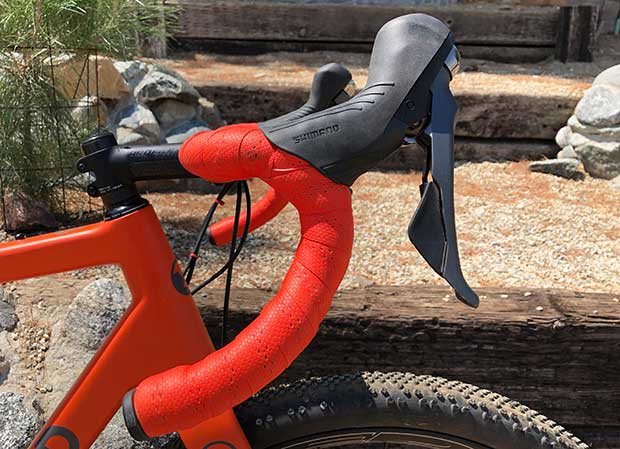
The DRV/GRM (you pronounce it Drive Jee Are Em) has one additional wrinkle: The whole bar is raised almost a centimeter. You can see this in the images. The bar turns up on either side of the handlebar clamp, then turns flat. This raises the bar’s height about 9mm versus the height of a typical bar that doesn’t do this. (This bar changes its shape somewhat – it doesn’t remain entirely round throughout – and the 9mm of height is measured from the top of the bar as it passes thru the handlebar clamp to the top of the bar, where you rest your hand along the “tops”.)
I predict this extra height will be a hit in the aftermarket, but not so much among the OEM customers. You take this bar pictured here as an example, it’s mounted onto an OBED Boundary. The bike’s designer has his own specific notion of how tall and long he wants his frame to be. If he wanted it 9mm taller he’d have designed it that way.
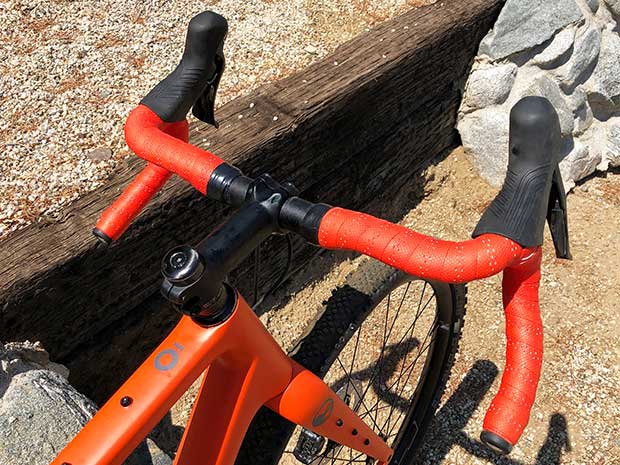
What the bike maker wants out of his handlebar supplier is to worry about handlebar-specific geometry: reach, drop, flare, overall width at the hoods and hooks, final turn-in back to bike centerline parallel, and verticality of the hoods.
However, for the user who’s found his or her gravel bike is just not tall enough, this bar means there’s one more 10mm spacer you don’t have to stick under the stem. So, in my opinion, this bar will find a larger audience as an aftermarket bar.
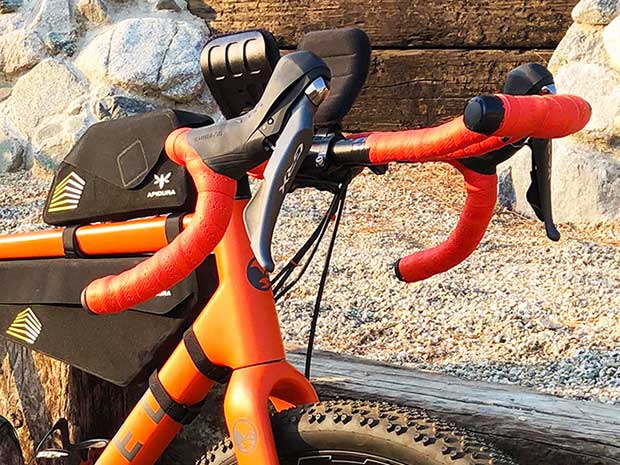
Me? I’m okay with the bar, because I normalize for this extra rise through altering the geometry of the stem + any spacers (I might place a -17° stem on my bike – which I did – instead of, say, a -8°). Nevertheless, the bike makers who spec this bar will want a flat (no rise) version of it, and this bar is slated to arrive near the end of the year. From what I understand, a flat version is forthcoming. (There is one specific use for a rise bar like this, which is if you're going to attach a clip-on, and I'll tell you why below.)
Here’s the psychology of it: We’re all going to invest in a set of road wheels for our dual-use gravel bikes, right? We can do this because we’re preserving the tire radius (the distance from the wheel axle to the ground, meaning, the entire inflated wheel/tire construct). Because all these bikes use disc brakes we can put different sized wheels in the bike and we be good. In each case, the wheel radius is more or less 345mm (650b with 53mm gravel tire, 700c with a 30mm road tire). Capiche?
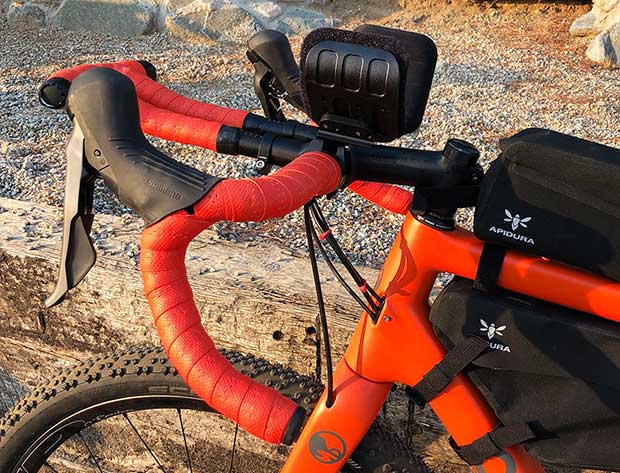
But the bike is really, primarily, a gravel bike, right? It’s a gravel bike that we use for road race. So, you put a gravel handlebar on it. Like this one I’m writing about here. But we occasionally ride it like a road bike. When we do this, we’ve got this gravel handlebar on it, and danged if it isn’t more comfortable than our traditional road bar. At some point this is going to start to become obvious.
If you care about road race rules legality, even the UCI rulebook only states that the bar has to not exceed 50cm in width. If you look at what the pro roadies are riding these days, they’re on very narrow road bars, with hoods tilted inward which, I guess, makes the body more aero for most riding most of the time. Because these guys are trying for a narrow aspect while on the hoods, there’s plenty of room for a bar that has, say, 40cm of width at the hoods to have 49cm of overall width at the hook terminus; and be shallow drop and short reach. The flare makes a shallow drop bar work because the tops of the bar are not creating a clearance problem for your wrists when you’re in the drops. Sprinters are going to love it, as will weekend duffers like you and me.
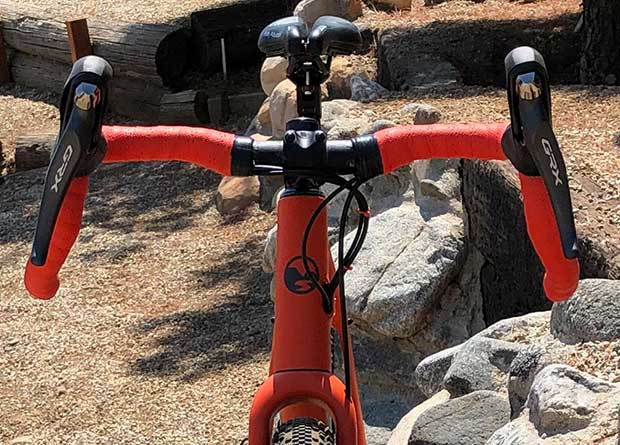
This is an aluminum bar so, like the Zipp XPLR, it is designed for those who don’t have an entire paycheck to spend on a handlebar, and is priced as an original equipment product (or that can be part of a groupkit option on a direct seller’s online configurator). The ENVE G Series, or the 3T Aeroghaia (jeez I hope I spelled that right) are carbon bars and are going to be priced more toward the $350 range. I have no price on the DRV/GRM, but I’d guess likely around $110 or $120.
By the way, what I’m writing about here is simply a drop bar. Not a clip-on. Some of the images here show a clip-on, and this bar with this clip-on has some specific utility for me and it's this: If I’m going to ride an aerobar with a road bar as the base bar (which is in most cases not advised) I want the height difference between the pads and the drops to be as low as mechanically possible. How do I make that happen? I begin with an aerobar that has very low profile pads, that is, the top of the pads are 3cm or 4cm at most above the center of the handlebar clamp. Then, I raise the whole bar a centimeter, and raising the whole bar means raising the drops. Bear this in mind: the clip-ons in these photos clamp to the Profile bar before the rise occurs. Therefore, for me, this Profile bar is a perfect match for this particular use of mine, which is a bar drop bar on which you'd mount a clip-on (the bike in these pics is getting built up as a bikepacker). Also, these particular clip-on aerobars feature spring-loaded flip-up armrests, getting the armrests out of the way for riding with hands-on-tops; and they aren’t kneecappers when I’m climbing out of the saddle. But I'm straying from the matter at hand; let's get back to the gravel bar…
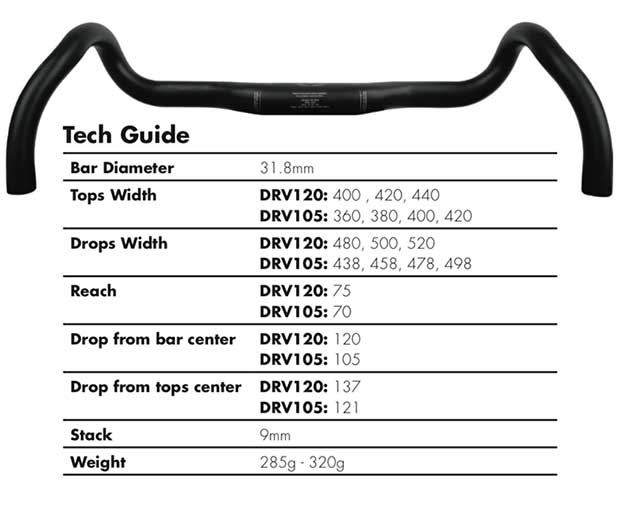
Why do I say this is the bar of the future? You might have noticed I’m writing a lot of articles about bikes that serve more than 1 purpose. Cervelo’s Caledonia, the 3T Racemax and Exploro, the bikes from OPEN (specifically the WI.DE), the OBED Boundary, these are bikes that are made with a very specific geometry. The front end has a 72° head angle and a 50mm fork offset. In my size (if you’re 6’1” or 6’2”) you can get a bike with about a 580mm to 590mm frame stack, 385mm or 390mm frame reach, which is good for the ergonomics of hydraulic road levers (which tend to add a little length to the cockpit in my experience), and these bikes have front-centers of 608mm to 612mm and chain stays of about 415mm.
These are great dual-use bikes. You can put a 700c road wheel with a 30mm tire; or a 650b wheel and a 53mm fatty gravel tire (not in the Caledonia, that’s a special case); and you have either a bike for hard core gravel or a bike for “classics” pavement.
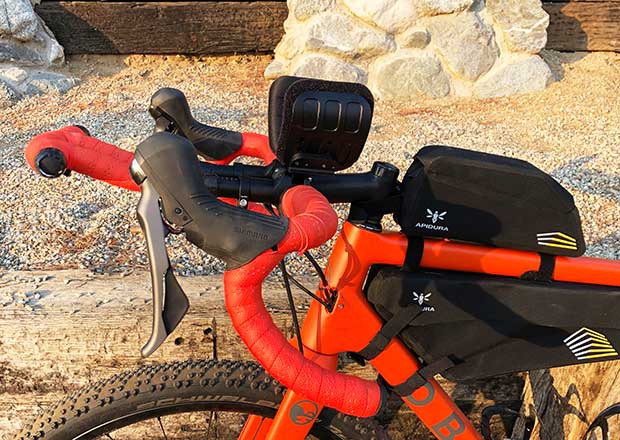
There will be at least 2 versions of this bar, the DRV 105 and the DRV 120. The DRV 105 is the really shallow drop bar and this is the one I like. Yes, this bar drops 105mm from the bar center to the drops, but that’s deceiving, because the bar raised the tops a centimeter, then drops roughly 120mm, leaving the net drop from the handlebar clamp at 105mm. I guess you could add more options if PD also comes out with a gravel bar that has no rise to it.
That said, the 105 and the 120 refer not specifically to handlebar drop, but a metric Profile Design calls drive. This is the measure from handlebar clamp down and forward to the center of where you actually grab the bar, so, Drive (hence the DRV part of the name in a drop bar by from this company) is closely related to drop; it may be identical to drop, but it isn't precisely drop.
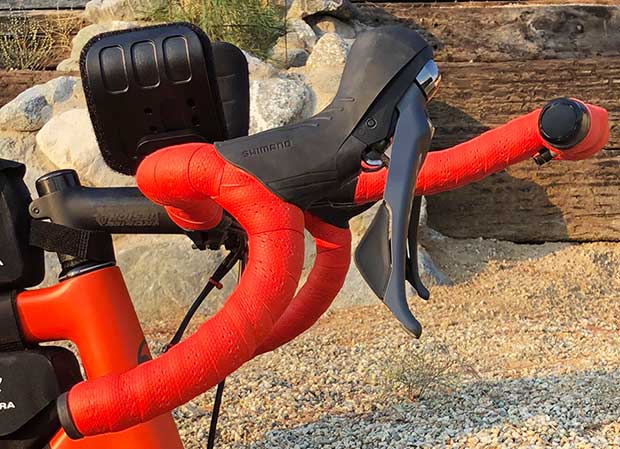
In my opinion, it’s this habit of occasionally riding our dual-use gravel bikes as road bikes that will inform the geometry of single-use road bars, and those bars are going to begin to look and smell and taste a lot like these gravel bars we’re putting on our bikes – if it’s like the bars made by these 4 companies.
You won’t find the DRV/GMR on Profile Design’s website. Yet. The bar isn’t slated to debut until the end of the year. I’ll prompt you when it’s imminent.


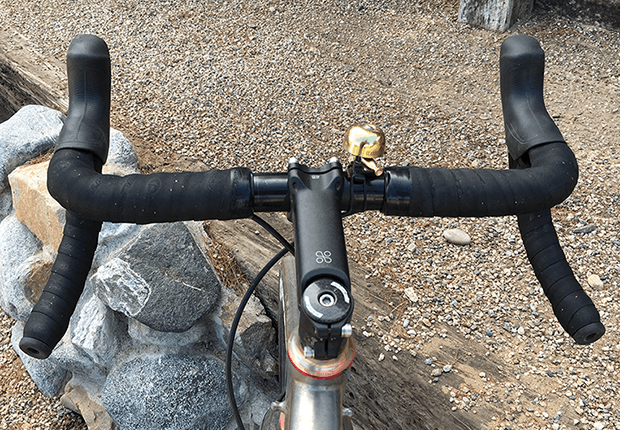
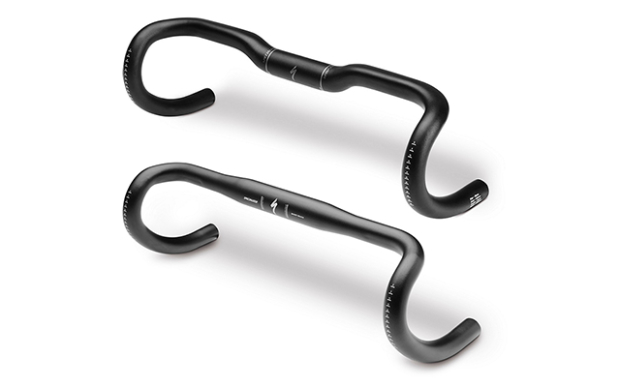
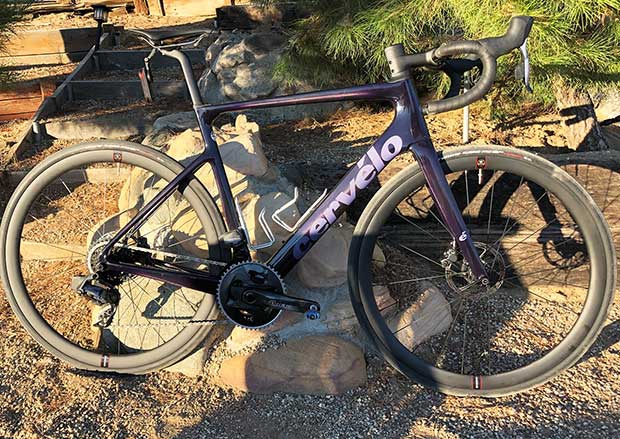
Start the discussion at slowtwitch.northend.network